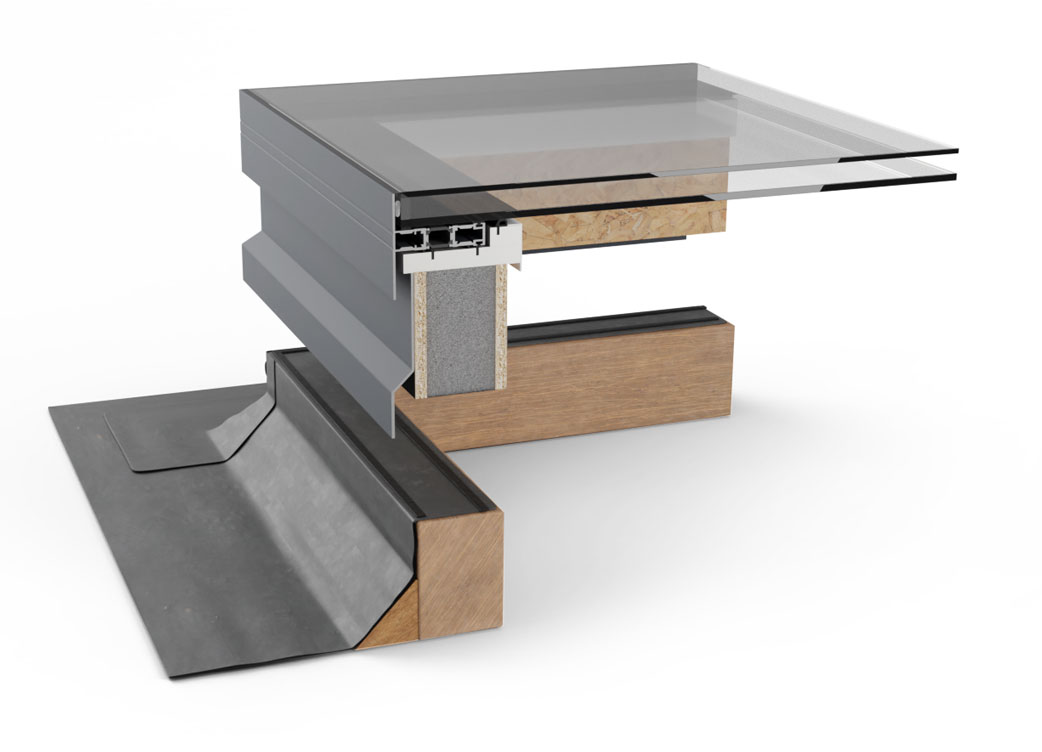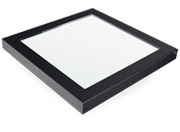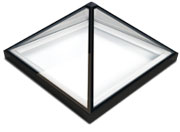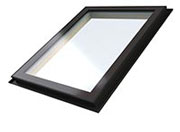Choosing Safe And Secure Glass For Your Rooflights
When it comes to installing rooflights in your home, safety is paramount. The perfect choice should be a blend of contemporary design, thermal efficiency, safety and security.
The glass used in manufacture is the best indicator for safety levels so it is essential that you choose the right kind of glass for your rooflight.
In order to ensure your utmost safety, the ideal specification should include a double glazed unit with an outer toughened pane and an inner panel of heat strengthened laminated glass.

In fact there are many reasons why a combination of both toughened and laminated glass is the preferable choice when it comes to rooflights. Let’s take a look at the pros and cons of each type of glass below.
Toughened
The variation in cooling rates creates compressive and tensile stresses. These counteracting stresses are what give toughened glass its higher resistance to breakage as well as the smaller shard fragments when it does shatter.
These small pieces may be less dangerous than larger ones, but they can still pose a problem, especially to those with young children or pets. The pieces are quite hard to find when sweeping up after a breakage and if they are consumed, they could cause serious issues to the digestive system.
Due to its resistant properties, toughened glass has a broad range of applications in architecture and vehicles, as well as furniture and public transport. However, it is not as secure as its laminated alternative, as the small fragments are very easily brushed away once the pane is smashed.
Whilst this makes toughened panes perfect for fire escapes and emergency exits on vehicles, it’s not ideal when it comes to securing a home. Without any dangerous shards left from breaking the glass, intruders are granted relatively easy access through a home window or sliding door that is fitted with toughened panes after they’ve been smashed.
Laminated
Laminated glass can offer increased protection and has mild sound proofing qualities, which is incredibly useful when it comes to spaces such as corporate meeting rooms.
Made from an interlayer of polymeric material sandwiched between two or more layers of glass, it is produced through two different methods.
The most common method is to use a combination of heat and pressure to push a thin layer of PVB between the sheets. Other polymers an also be added to give the window different properties. The other method creates what is known as Cast in Place laminated glass. This is made by pouring resin into the thin space between two panes that are held in place incredibly close to one another.
The interlayer, which helps hold the sheets together, greatly reduces the danger of sharp glass fragments, and increases the durability of the pane. It also provides a way to customise the glass and add colouring, sound dampening, ultraviolet filtering and fire resistance. Although the durability provides a heightened level of safety, it does mean that it cannot be used for fire escapes, as it will not break in an emergency.
Often used in secure buildings such as banks, and by the automotive industry for car windshields it’s also the perfect choice to secure a home; whether it’s used for the windows, doors or rooflights.
The EOS Glass Specification
All of our rooflights are manufactured using both laminated and toughened glass, which means that you benefit from the highest levels of safety and energy efficiency. For more information about how we can provide you with a safe and secure solution, contact EOS Rooflights today or take a look at our Fixed skylight, Electric Opening pages for more information and to see our stock sizes.

Other blogs you may like..
What is the Difference Between Rooflights and Skylights
What is the Difference Between Rooflights and Skylights?In the realm of architectural design and home improvement, rooflights and skylights play pivotal roles in illuminating interior spaces with natural light. However, despite their similar purpose, distinguishing...
The Part L grace period has come to an end. What does this mean for your rooflight installation?
New Part L Building Regulations - What does this mean for your rooflight installation?What is "Part L"? Part L is an English building regulation which sets parameters and standards for energy efficiency and performance for new and existing buildings. Part L first came...
Warm Roofs vs Cold Roof
Warm Roof vs. Cold Roof: Understanding the Key DifferencesWhen it comes to roofing, the terms "warm roof" and "cold roof" often arise. Understanding the differences between these two types is essential for homeowners, architects, and builders seeking to create...
2023 Interior Trends: Inspiring Home Decor Looks
2023 Interior trends: inspiring home decor looks From waves of sea green to sustainable flooring, we’ve pulled together the seven 2023 interior trends and inspiring home decor looks we’ve seen emerging in 2022 which look set to take over in 2023. From the colours...
How Thick Does Your Roof Light Glass Need To Be?
How thick does your Roof Light Glass Need to Be? When shopping around for the right roof light for your home, it is likely you will come across various measurements for the glass. Not every supplier will provide you with the optimum measurements as standard so never...
Rooflights: What Are U Values and Why Are They Important?
Rooflights: What Are U Values and Why Are They Important?Increasingly, new build projects as well as existing buildings are maximising the use of natural light together with the thermal properties of modern glass, to create a revolution in how we look at heat...
Contact our team
If you have any questions, would like a bespoke price or want to enquire about our installation service. Give us a call or drop an email:
![]() 0208 462 3557
0208 462 3557



